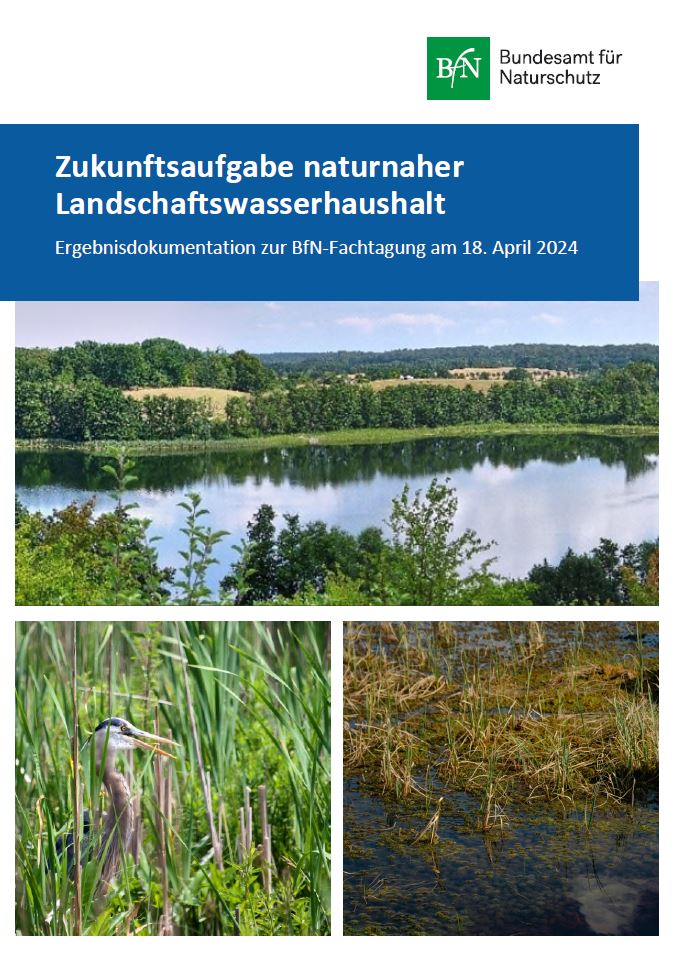Zukunftsaufgabe naturnaher Landschaftswasserhaushalt
Ergebnisdokumentation zur BfN-Fachtagung am 18. April 2024
- Publication
- Citation
Bundesamt für Naturschutz (Hrsg.) (2024): Zukunftsaufgabe naturnaher Landschaftswasserhaushalt. Ergebnisdokumentation zur BfN-Fachtagung am 18. April 2024. Bonn.
The symposium "The future task of a near-natural landscape water balance" of the Federal Agency for Nature Conservation (BfN) was organized by Ecologic Institute and took place on 18 April 2024, in Bonn. Several aspects such as key challenges and solutions for restoring a near-natural landscape water balance were discussed. In addition, an exchange took place on nature conservation objectives and implementation deficits, as well as possible research questions and application projects. In doing so, interfaces and synergies between nature conservation issues and other disciplines such as water management were considered, as well as current framework conditions and future climatic changes.
Three thematic blocks of the conference covered the framework conditions, instruments and management options for a near-natural landscape water balance.
Some of the most important contents and results of the conference include:
- There is an urgent nationwide need to restore an intact, near-natural landscape water balance, particularly due to its great importance for nature and resource conservation, climate protection, as well as for adaptation to climate change.
- The renaturation of ecosystems is an important measure. In this context, the development of sponge landscapes and cities are of great importance, for which existing interdisciplinary models should be used and, if necessary, expanded.
- A lack of available land is a key obstacle to the restoration of both ecosystems and an intact landscape water balance, thus instruments for resolving land use conflicts and multifunctional land use concepts are urgently needed.
- The transformation of land and water management is necessary for the restoration of a near-natural landscape water balance.
- Potential synergies between the goals and measures of nature conservation, water management, watercourse and floodplain protection, climate protection and climate adaptation should be increasingly utilized.
- The political goal of restoring a near-natural landscape water balance is further reinforced, for example, by the Natural Climate Protection Action Program (ANK) and the National Water Strategy. In addition, promoting the natural water balance is also an important measure for implementing the European Water Framework Directive.
- There is a particular need for action in implementation practice. Measures to improve the landscape water balance should be implemented more frequently in future. This requires, amongst others, a closer link between science and practice, interdisciplinary cooperation, improved human and financial resources and participatory approaches.





